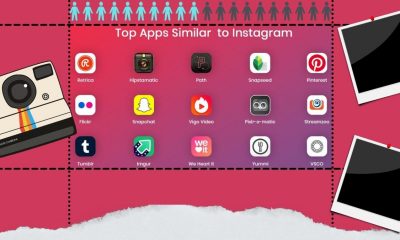Software Development
What Is ‘Cloud Native’ (and Why Does It Matter)?
Cloud computing adoption has accelerated rapidly as technology leaders look to achieve the right mix of on-premise and managed cloud services for various applications and workloads. And this adoption is only expected to increase further; according to IDC, public cloud spending is forecasted to nearly double from $229 billion in 2019 to almost $500 billion in 2023.
As cloud computing adoption has increased across IT, a new application classification has also emerged: “cloud native.” As the “cloud native” descriptor appears more and more often in developer conversations and in articles such as, “The challenges of truly embracing cloud native” and “Six steps for making a successful transition to a cloud native architecture,” it’s become such a buzzword that the important distinctions for successful systems and applications are often lost. By designing cloud native solutions from the beginning, businesses can maximize the full potential of the cloud instead of struggling to adapt existing architectures.
What Does Cloud Native Mean?
The Linux Foundation offers the following definition: “Cloud native computing uses an open-source software stack to deploy applications as microservices, packaging each part into its own container and dynamically orchestrating those containers to optimize resource utilization.”
Analyst Janakiram MSV provided a slightly different description to The New Stack: “Cloud native is a term used to describe container-based environments. Cloud native technologies are used to develop applications built with services packaged in containers, deployed as microservices and managed on elastic infrastructure through agile DevOps processes and continuous delivery workflows.”
While those technical definitions might be accurate, they also somewhat obscure the forest for the trees. At Streamlio, we believe it’s useful to take a step back from the technical definitions to set the broader context: to be cloud native as a solution is to embody the distinguishing characteristics of the cloud. It’s no longer enough for developers to design systems and applications that simply operate “in the cloud.” Instead, the cloud needs to be a key part of the design process so solutions are optimized from the ground up to leverage that environment.
For example, the practice of “lift and shift” to move on-premise IT infrastructure to the cloud in no way results in a cloud native solution. Deploying a solution in the cloud that was originally designed to run in a traditional data center is possible, but generally of limited merit, as you’re simply redeploying the same application and architecture on different infrastructure and likely making it more complicated in the process.
The Easy Way to Tell if a Solution Is Cloud Native
Cloud native solutions allow you to deploy, iterate and redeploy quickly and easily, wherever needed and only for as long as necessary. That flexibility is what makes it easy to experiment and to implement in the cloud. Cloud native solutions are also able to elastically scale up and down on the fly (without disruption) to deliver the appropriate cost-performance mix and keep up with growing or changing demands. This means you only have to pay for and use what you need.
Cloud native solutions also streamline costs and operations. They make it easy to automate a number of deployment and operational tasks, and — because they are accessible and manageable anywhere — make it possible for operations teams to standardize software deployment and management. They are also easy to integrate with a variety of cloud tools, enabling extensive monitoring and faster remediation of issues.
Finally, to make disruption virtually unnoticeable, cloud native solutions must be robust and always on, which is inherently expensive. For use cases where this level of resiliency is needed, it’s worth every penny. But for use cases where less rigorous guarantees make sense, the level of resiliency in a true cloud native architecture should be easily tunable to deliver the appropriate cost-reliability balance for the needs at hand.
Best Practices for Becoming Cloud Native
Organizations looking to become more cloud native should carefully examine how closely new technology meets the above criteria. Key areas of focus should be on how (not just where) data is stored and, perhaps more importantly, how it is moved into and out of the production environment. Some questions you can ask to determine how “cloud native” a solution includes:
- How is resiliency handled? How are scaling and security implemented?
- Rather than asking if it’s implemented as an open-source software stack that deploys as a series of microservices, ask can you scale up and down without disrupting users or applications?
- Can the solution not only easily be deployed, but also be rapidly (re)configured?
Asking questions like these helps you to uncover the underlying architecture of the solution. Fundamentally, it’s either cloud native or it’s not. You can’t just add cloud native fairy dust into an architecture not designed for it and be successful. For enterprises and vendors, building in the cloud is an opportunity to refresh applications and architectures in ways that make them more flexible, scalable and resilient, changing the way organizations can and must think about things like capacity planning, security and more.
Organizations should also carefully avoid designing solutions that are either too narrow or too broad. Designing for too narrow a scenario can make it difficult to accommodate new uses and applications that emerge rapidly in cloud environments, while designing for too many possible needs at the start can lead to over-engineering that delays projects and adds paralyzing and fragile complexity.
When choosing a cloud solution, don’t just assume that because a solution comes from a cloud provider it’s the most cloud native option available. Instead, carefully evaluate each application to ensure it meets both your needs and your expectations.
-

 Marketing Tips5 days ago
Marketing Tips5 days agoWhat is my Instagram URL? How to Find & Copy Address [Guide on Desktop or Mobile]
-

 Cyber Risk Management24 hours ago
Cyber Risk Management24 hours agoHow Much Does a Hosting Server Cost Per User for an App?
-

 Grow Your Business5 days ago
Grow Your Business5 days agoBest Instagram-like Apps and their Features
-

 Outsourcing Development24 hours ago
Outsourcing Development24 hours agoAll you need to know about Offshore Staff Augmentation
-

 Software Development24 hours ago
Software Development24 hours agoThings to consider before starting a Retail Software Development
-
Marketing Tips5 days ago
B2B Instagram Statistics in 2024
-

 Grow Your Business16 hours ago
Grow Your Business16 hours agoThe Average Size of Home Office: A Perfect Workspace
-
Solution Review16 hours ago
Top 10 Best Fake ID Websites [OnlyFake?]






